Last updated on December 23rd, 2022 at 06:14 am
If you want to grow your own vegetable from sprouts (especially cucumbers), knowing the cucumber growth stages will increase your chance in the success of harvesting this vegetable in the next 10 weeks.
This long, dark-greened, and slightly shiny vegetable has been consumed by humans for more than 3000 years! They have a high water content that is good to keep you hydrated, rich in fiber and vitamins, but low in calories–making them one of the most popular foods recommended by dietitians.

Growing cucumbers from their seeds until they arrive safely in your salad bowl is quite a long journey. In fact, growing a healthy, disease and pest-free cucumber is not such easy homework to do! In this article, we will explain how and why so let’s get into it.
Table of Contents
Cucumber origin, usage, and types.
Origin
Cucumbers (Cucumis sativus) are native to Thailand and the slopes of the Himalayas. They’re from the family of Cucurbitaceae, which includes squash, zucchini, watermelon, and pumpkin. The cucumbers that we first cultivated had a more bitter taste than the cucumbers we are used to consuming now. Thanks to the increasingly advanced agricultural technology, farmers were able to reduce the level of cucurbitacin, a chemical compound that makes cucumber taste bitter as a defense mechanism against cucumber-eating animals like deer.
Usage
The use of cucumber as a food ingredient can also be found in Biblical text, where the Ancient Egyptians used the plant to make beer with lower alcohol content. Meanwhile, in England, cucumbers first came through the order of King Henry VII’s wife, who used cucumbers in her salads. The popularity of cucumbers grew more rapidly after the Discovery Era when every country competed to grow this vegetable, although at the time cucumbers still had more bitterness than their modern counterparts.
Nowadays, cucumbers are widely used for consumption, food garnishes, health purposes, and beauty purposes. It’s no secret that women use cucumbers as face and eye masks. This is because cucumbers contain around 96% water, which is good for relieving puffy eyes. The anti-inflammatory could also help to cure acne. The nutritional value of cucumbers is also able to prevent cancer, lowers sugar levels, as well as prevent cardiovascular problems.
Types
The common cucumber types are American cucumbers or slicing cucumbers, Armenian cucumbers, gherkin cucumbers or pickled cucumbers, and Persian cucumbers. Another variety, like lemon cucumbers, grows in yellow or dark orange colors instead of the regular dark green color. Slicing cucumbers are the most popular one. This type of cucumber is usually 8 to 10 inches long with dark green color and a slightly yellowish hue at the bottom. It also has thicker skin so you might want to slice it before consuming it.
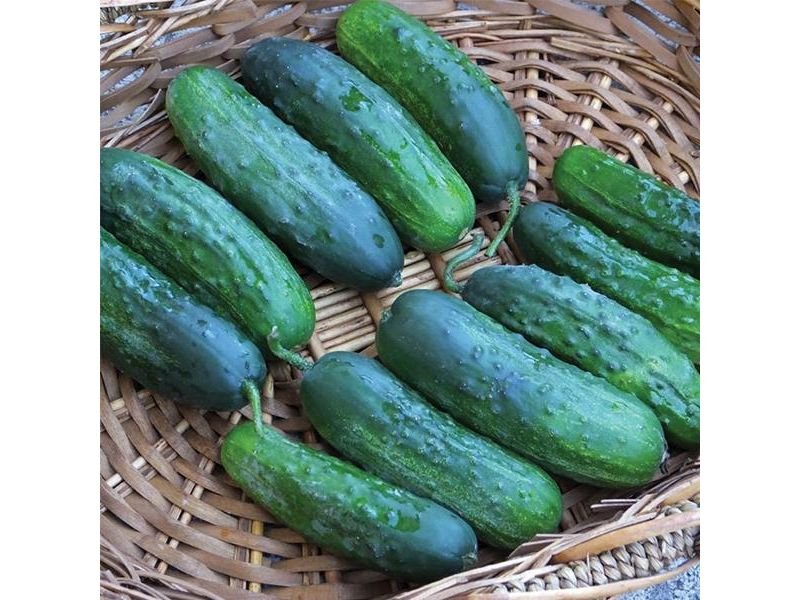
Armenian cucumbers have the most unique appearance, with unusually long shapes and curled at the bottom part. Also known as snake cucumbers, it has dark green and pale green stripes 11 to 15 inches long. Meanwhile, gherkins or pickled cucumbers are much smaller in size, only around 2 to 3 inches long with dark green color. A little fun fact, pickled cucumbers are mostly consumed in America, along with other countries like India, Korea, and China.
Cucumber growth stages
Perhaps you might think, why do we need to know the life cycle of a cucumber plant? Knowing the cucumber growth stages could offer you many benefits, one of which is to help you figure out when you can harvest the fruit of your labor. This is also useful to help you estimate when to plant your next crop. Additionally, you can use this information to determine if there’s something wrong in the process of growing your cucumbers.
Generally, cucumbers take around 55 to 70 days to harvest. The harvesting process could take longer or shorter, depending on which type of cucumber you are planting, the weather, and the temperature. Let’s say it has been more than 70 days since you planted the cucumbers, or it has been more than a week but you haven’t seen the sprout yet, then most likely, there is something you did wrong in the planting process. Sometimes, pests like caterpillars or diseases along with fungi could also be the culprit.
Before start harvesting your cucumbers, here are several points you should take note of:
- Cucumbers love warmer areas. They won’t grow in areas below 10 Celcius, so the warmer, the better. A good thing to add, this plant is heat resistant.
- Cucumbers have two types of planting habits, which are vining and spreading or creeping. What if I can’t provide a trellis for vining cucumbers? It causes more trouble than ease by making the planting process more difficult. This can also make the vining cucumbers grow intertwined.
- Cucumbers are shallow-rooted. The root can expand as deep as 120 centimeters. But can I grow cucumbers in pots or containers? Yes, you can. Just make sure to grow the plant in bigger size containers or pots with a good drainage system.
- Cucumbers either grow both male and female flowers or gynoecious–which grow mostly female flowers with only several male flowers. The term that states gynoecious cucumbers don’t need male flowers to produce is not exactly true. After all, gynoecious cucumbers still grow male flowers but in much fewer quantities. To produce fruits, male flowers are needed for the pollination process.
- Which one should I choose? Vining cucumbers or spreading cucumbers? It depends on how large your garden space is. While producing more fruits, vining cucumbers need much more space than spreading cucumbers. So if you can’t provide much space, you should go by spreading cucumbers instead.
Already know which type of cucumbers you are most attracted to. Cool! Now let’s take a look at the 4 main cucumber plant stages:
Sowing stage
The very first cucumber growth stage is the sowing stage. This includes the time you put the cucumber seeds into the nutrient-rich soil. The first roots will grow at this stage. Keep the temperature and the soil warm to let this process.
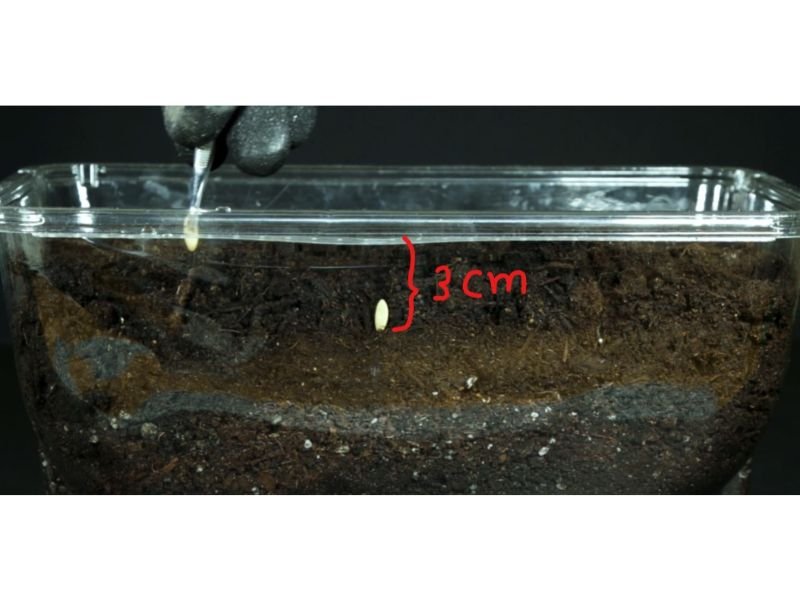
How warm is too warm for the cucumber seeds to grow?
As we stated before, cucumbers are tropical fruits that love warm areas. So make sure to plant them in an area where 18 celsius is the minimum heat. The plant will thank you.
Tips: If you’re using containers or pots to grow your cucumbers, you can move the plant to much warmer areas of your house or garden. If you plant the cucumbers directly on the soil, you can use an old blanket or black plastic to cover your cucumber and bring in more warmth. Another tip, you can use a temperature checker for both the soil and the air to know if the temperature suddenly drops or if it remains the same.
How long is the sowing process?
It depends on the temperature. It takes around 10 or more days for the seeds to grow if placed in an area with a temperature of 18 to 26 Celsius. In areas where the temperature is 26 to 32 celsius, this process will take shorter days to only about 3 to 10 days. To conclude, this process might take around 1 to 2 weeks.
How can I fasten the sowing process?
Just make sure to place the cucumber seeds in an area where the temperature is 26 celsius or warmer. However, the maximum heat recommended is 32 celsius.
How deep should I bury the cucumber seeds?
Keep it no deeper than 3 centimeters to allow more roots to grow and spread.
Can I use fertilizer at the cucumber sowing stage?
Yes! You can use fertilizers such as nitrogen, phosphorus, and potassium. Do not over-fertilizing. Once a month or once every three months is the recommended criteria.
Cucumbers are 96% water. Do you still need to water them regularly?
Of course! Especially during the cucumber’s early stage of development. Just remember not to over-watering and provide a planting area with good drainage. The formula is about 3 centimeters of water per week. However, vining cucumbers need more water since this plant is a heavy feeder.
Tips: To restrain water, you can use mulch. Mulch is an organic material made from compost, pine bark, or grass clippings to restrain water. Spread the mulch at the topsoil.
Sprout development stage
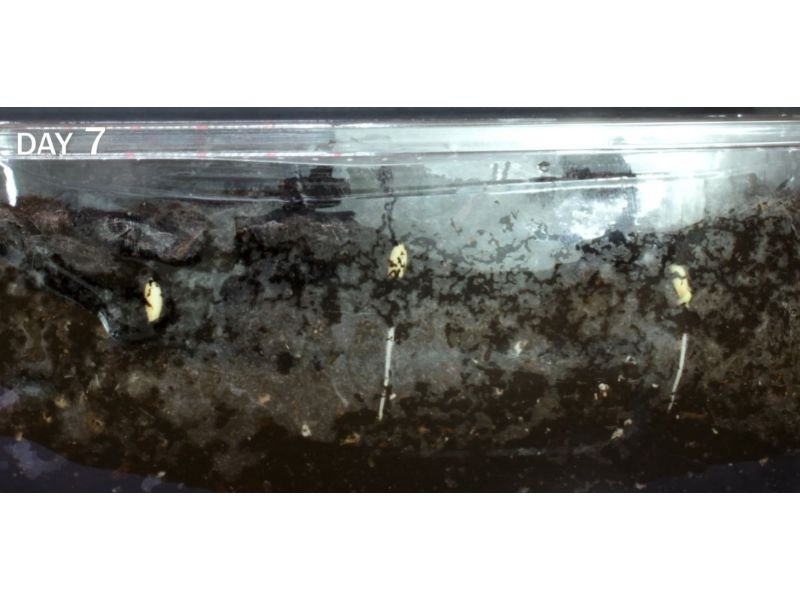


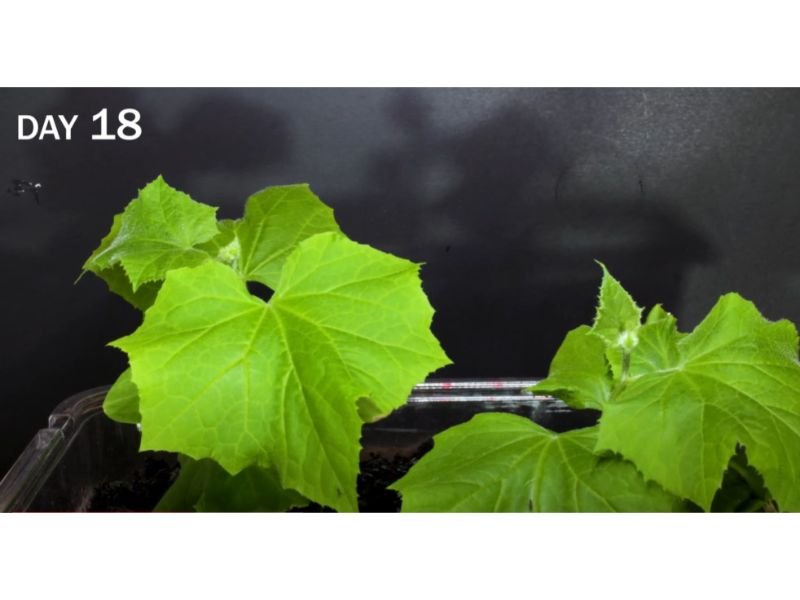
After successfully passing the sowing stage, then the second life cycle of a cucumber plant is the sprout development stage. In this growing process, the first two leaves called dicotyledon will sprout. These leaves will help the young cucumbers with the photosynthesis process, as well as promote new leaves to grow. At this stage, you also have to provide a trellis to support your cucumber growth.
Can I use a trellis if my cucumber’s growth habit is not vining?
Yes, you can use a trellis for both growth habits. A downside if you let cucumbers spread on the ground is they are likely more prone to diseases.
What kind of pests and diseases should I look for in this cucumber plant stage?
At this growing stage, you should be aware of caterpillars since they like to munch on the cucumber’s leaves. Other pests and fungi like powdery mildew, leaf spots, scabs, spider mite, and bacterial wilt are just a few of the most common cucumber diseases. But overall, they can be managed using these tips.
Tips: It may sound harsh, but the easiest way to get rid of caterpillars is by crushing the small animals using your hand. Second, you can use a mix of dish soap and water. Third, you can collect the caterpillars one by one and move them far away from your garden. Insecticides or non-chemical materials like neem oil also do wonders to help your cucumbers from pests and diseases–although not all can be cured. As an example, for powdery mildew depends on how severe the infection is. In some cases, if the infection is too severe, you need to repot as soon as possible and cut the dying leaves, fruits, and/or stems.
How long is the sprout development process in the cucumber growth stages?
After the sowing process, you can expect a dicotyledon sprout from your cucumber seeds at the start of day 10. More leaves and flowers will thrive to grow until approximately around day 40. Soon after this, your cucumber will move on to its next growth cycle.
What can I do to fasten the cucumber growth process aside from using fertilizers?
If you’re not a fan of fertilizers, one thing you can do to grow a fast and healthy cucumber is by making sure you plant them in the right conditions. This includes growing your cucumber in an area with 6 or more hours of direct sunlight, using moist, high organic matter soil with good drainage, and water regularly. Also, take note that cucumber loves slightly acidic soil with a pH between 6.0 to 6.5.
Fertilization stage
The third cucumber plant stages is the fertilization or pollination stage. At this stage, male and female flowers will occur. When pollinators like bees carry the pollen from male flowers to female flowers, that’s where pollination happens. Pollination can also be done through the help of wind, and water, as well as by using hand pollination techniques.
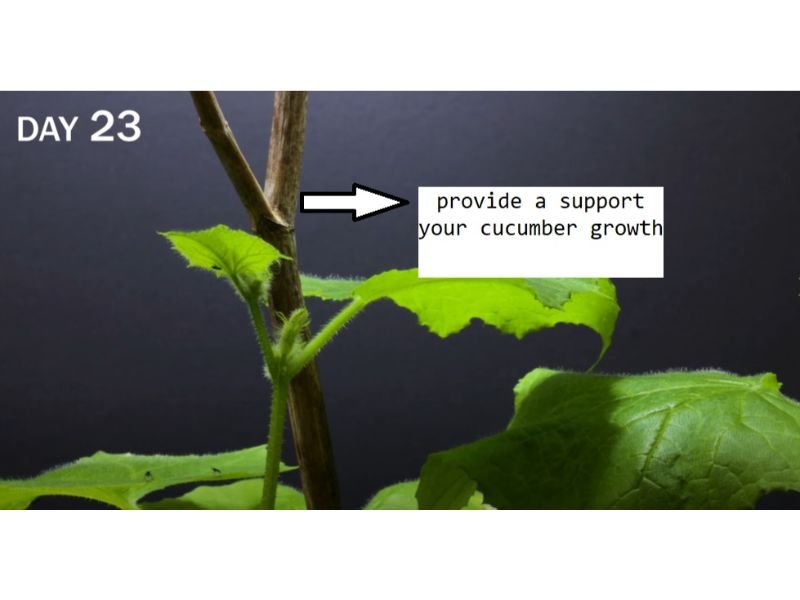

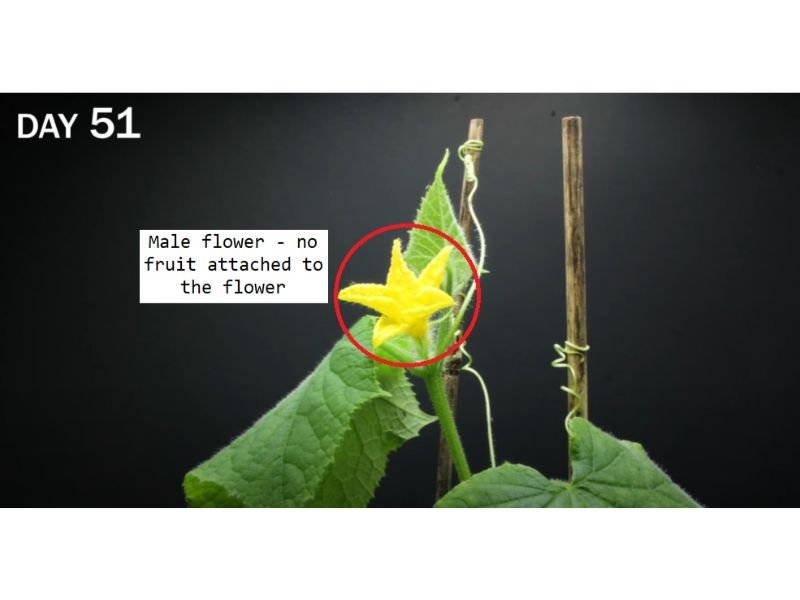
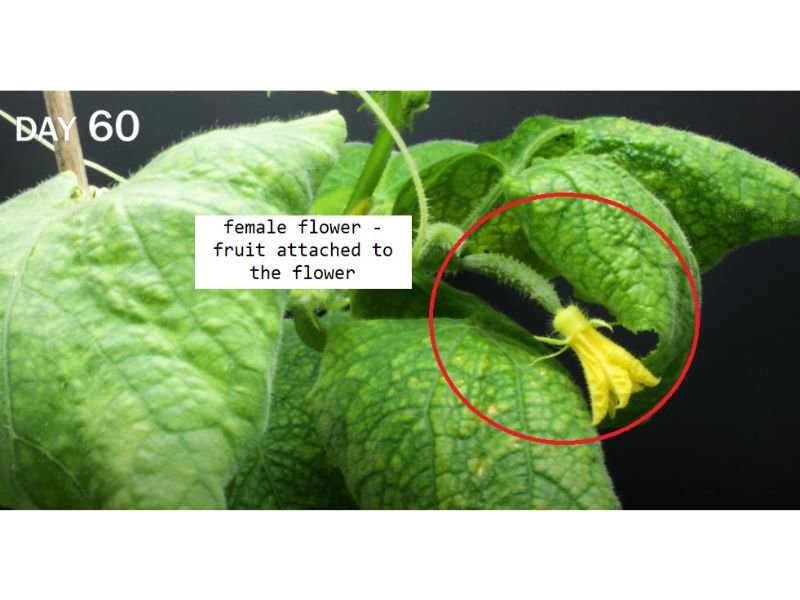
How to differentiate male cucumber flowers from female cucumber flowers?
It’s easy to differentiate between male and female cucumber flowers. Female flowers have a small green, tube-like ‘early fruit’ that is attached right behind the petals. The ‘early fruit’ will later grow into cucumbers when they succeed in the pollination process.
What can I do to attract more pollinators?
Create a habitat that is pollinators-friendly to keep them back in your garden. To do this, you can grow a companion plant like a sunflower or marigold to attract bees. Different pollinators are attracted to different colors and smell, so it’s better to know which pollinators you would like to invite to your garden. For instance, bees are attracted the most to blue, yellow, and purple flowers. To attract more pollinators with smell, you can plant flowers such as calendula and nasturtiums.
How long should I wait for the fertilization process?
The fertilization process should take between 10 to 20 days until it reaches the last stage, the harvesting stage.
How can I do the hand pollination process?
The hand pollination process is a great way to produce fruit if you’re living in an environment that is not pollinator-friendly or in a closed area such as an indoor garden and greenhouse–where there is not much wind. The process is simple but you have to do this carefully by manually transferring pollen from the stamen (male flower’s part) to the pistil (female flower’s part). To transfer the pollen, you can use help from cotton buds, a small painting brush, or simply rub the stamen to the pistil.
Fruit harvesting stage
The last life cycle of a cucumber plant is the fruit harvesting stage, a time when we all wait for the most. Most cucumber cultivars can be harvested on the 70th day, but some can be harvested before, depending on which variety of cucumber it is. Remember to pick the fruits carefully to prevent damaging the vines.
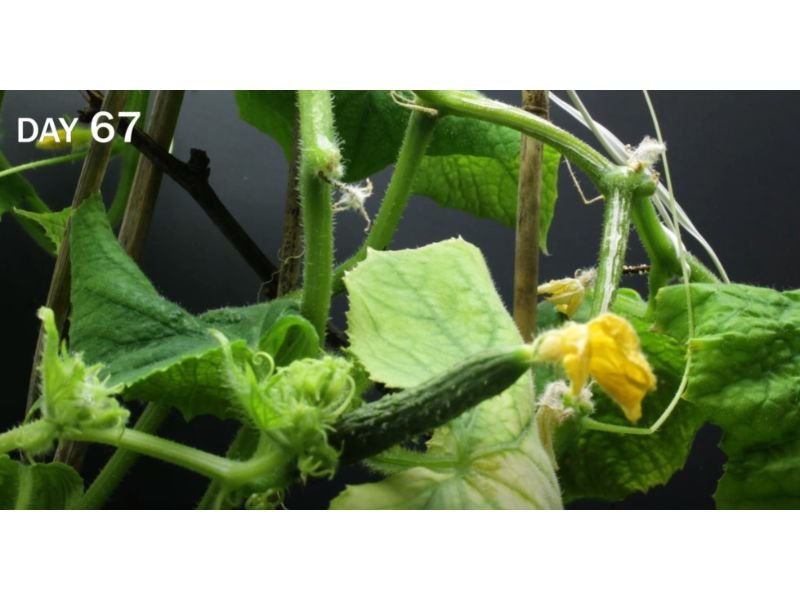

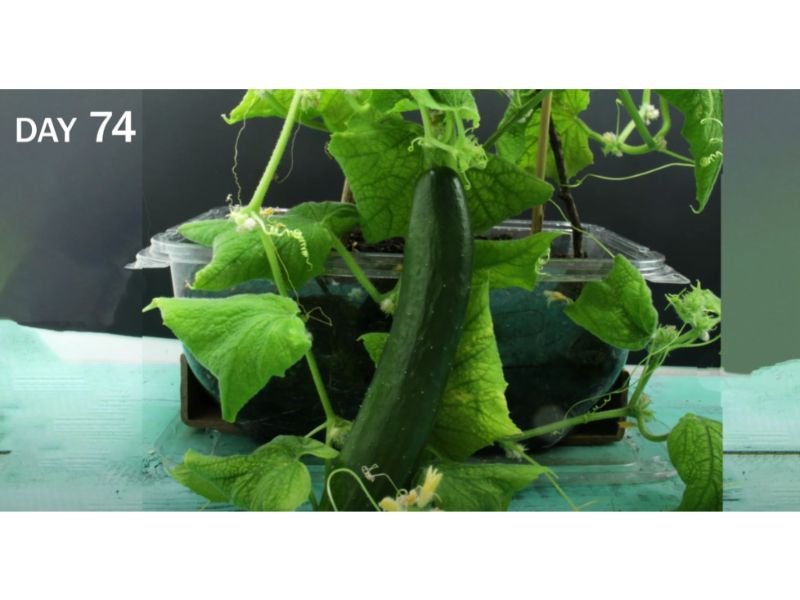
When is the best time to pick cucumbers?
The general rule to answer this question is by looking at the back of the seed package. There must be some information regarding this question, depending on which cucumber cultivars you are growing. If you’re buying cucumber seeds from a local harvest, you might want to ask the harvest which type of cucumber it is.
Tips: You can estimate the harvesting time with the following formula:
- Fresh-slicing bush cucumbers are ready to harvest on days 57 to 63.
- Fresh-slicing vine cucumbers are ready to harvest on days 54 to 76.
- Pickling cucumbers are ready to harvest on day 48.
- Gynoecious cucumbers are ready to harvest on day 52 (for the pickling variety) and day 66.
What can I do if my cucumber plant fails to grow fruits?
Failed harvesting day as well as failure in the pollination stage is a common thing among new gardeners. Sometimes, even if you pass the pollination stage, the plant will produce deformed or bitter fruits. Nonetheless, you can’t revert the process to the beginning. However, you can still consume a deformed cucumber–they may taste the same as the normal-looking one! Another way to overcome this is by using the deformed cucumbers as a mix of natural compost. Take note, even if you fail on the first try, you can always plant your next cucumbers.
Tips: Never add a diseased, pests, or fungi-infected plant to your compost since it can be contagious to another plant if used as a compost.
Can I eat cucumbers right after I pick them up from my garden?
Yes, you can eat freshly hand-picked cucumbers except for pickling cucumbers since they have to go through the pickling process.
What is the best way to store freshly hand-picked cucumbers?
If stored in the best way, cucumbers can last up to one week in your refrigerator. You will need plastic wrap, paper tissue, and a food container or zip-lock plastic for this. First, make sure to wipe any excess water from the cucumber using a paper tissue right after you rinse it off. Next, wrap the entire cucumber with plastic wrap to prevent moisture, and then place the cucumber inside the food container or zip-lock plastic.
Tips: Since cucumbers are high in water, place them away from other fruits and vegetables, especially the one which also contains high water like watermelon, to prevent mushiness.
Final thoughts.
To conclude, the cucumber plant stages consist of the sowing stage, sprout development stage, fertilization stage, and fruit harvesting stage. Overall, growing this annual plant is not daunting if you know what is the right way. There are many beneficial values of cucumbers, from nutritional and health value to garnishes, to be an addition to your skincare routine. So what are you waiting for? Start harvesting your cucumber now and happy gardening!

New author in the hood. Loves gardening and flowers are my spirit animals (yes I know they are not animals but I insist). I will be covering most of the flowers’ topics here and occasionally random though as well.






